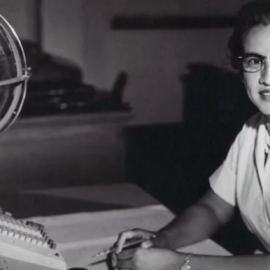

This article is an excerpt from the Shortform book guide to "Grit" by Angela Duckworth. Shortform has the world's best summaries and analyses of books you should be reading.
Like this article? Sign up for a free trial here .
Do you want to know how to have hope? How does hope help you have more grit?
Hope is one of the four main components of grit. Learning how to have hope means that you have optimism about one day achieving your goals.
Keep reading to learn how to have hope, and what it has to do with having grit.
How to Have Hope
Grit depends on hope that you have the power to improve things. Hope sustains passion by giving optimism that one day you can achieve your goals, and thus they’re worth holding for long periods of time. Hope sustains perseverance by encouraging thinking about how to overcome setbacks, rather than just accepting them as permanent.
Helplessness vs Optimism
In a classic experiment, scientists Seligman and Maier split dogs into two groups. In one group, the dog is put in a cage and is shocked at random times. If the dog pushes against a panel at the front of the cage, the shock ends early. After 64 shocks, the pain ends. In the other group, there is no panel that ceases the shocks.
The next day, the dog is put into a box with a divider leading to another box partition. The shock is now announced with a warning tone, so the dog has a chance to react. There is not a difference in behavior. Nearly all the dogs who had control over the shocks learn to jump over the wall and escape the shocks. Of the dogs who originally had no control over the shocks, only 1/3 of the dogs who had no control escape – the other 2/3 simply lay down and wait for the shocks to end.
This concept is called learned helplessness. Suffering without the belief of control habitually leads to depression symptoms, lack of concentration, and mood disorders. It can feel like all is lost, and there is no solution to your problems.
The antithesis to learned helplessness is learned optimism. Optimists tend to explain their suffering with temporary and specific causes, while pessimists seek permanent and broad causes.
For example, consider the prompt of “you can’t get all the work done that others expect of you. Imagine one major cause for this event.”
- Pessimists are more likely to say a permanent, broad cause like “I screw up everything. I’m a loser.” This attitude is broad and pervades nearly everything you do in life.
- In contrast, optimists are likely to point to specific behaviors, like “I mismanaged my time” or “I didn’t communicate my expectations well enough.” This leads to actionables to address next time and gives hope of improvement
Addressing specific and temporary causes is a part of cognitive behavioral therapy. If you keep searching for solutions to your problems, you at least have a chance of solving them. If you stop looking, you have zero chance of figuring our how to have hope.
“Whether you think you can, or think you can’t, you’re right.” – Henry Ford

———End of Preview———
Like what you just read? Read the rest of the world's best book summary and analysis of Angela Duckworth's "Grit" at Shortform .
Here's what you'll find in our full Grit summary :
- How your grit can predict your success
- The 4 components that make up grit
- Why focusing on talent means you overlook true potential






